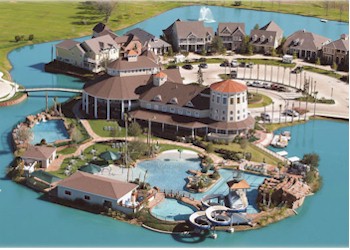As we age, choosing the right living arrangement becomes increasingly important. Understanding the options available is crucial to ensure your lifestyle and care needs are met as you transition into a new phase of life. In this blog post, we’ll explore the differences between senior living, retirement communities, independent living, and 55+ communities to help you make an informed decision.
Retirement Communities

Retirement communities are designed for retirees seeking a socially engaging and active living environment. These communities frequently include golf courses, fitness centers, and organized social events. They are ideal for individuals who wish to enjoy a full and vibrant lifestyle in their golden years. While they offer various advantages, it’s essential to consider the financial and lifestyle commitments involved.
55+ Communities
Communities for individuals aged 55 and older offer a combination of independent living and access to peer social networks. Unlike other age-restricted communities, these places often emphasize active lifestyles with various recreational opportunities. The social aspect is a significant draw, as residents can engage with others at a similar stage in life, participating in clubs, activities, and events promoting connection and camaraderie. Here are some 55 communities
- Fox Hills Condominiums, Rockaway, NJ
- The Islands, Rio Rancho, NM
- Heather Gardens, Aurora CO
- Del Webb at Mirehaven, Albuquerque NM
- Snowden Overlook – Columbia MD
Senior Living

The term “senior living” encompasses a variety of housing options designed to cater to seniors’ needs, typically offering a range of care levels and services. These communities often provide healthcare, assistance with daily activities, and social engagement opportunities, serving a broad demographic of older adults. Senior living is particularly suitable for those who need more thorough support but still wish to maintain a sense of community and engagement.
Independent Living
Independent living environments provide older adults with a lifestyle emphasizing autonomy. They offer minimal assistance while ensuring access to facilities that promote social interaction and wellness. These communities typically include private living spaces, communal dining options, and recreational activities, making them perfect for self-sufficient seniors who appreciate the benefits of a supportive community.
Assisted Living

Assisted living communities are designed for individuals who require assistance with daily activities but do not need the round-the-clock medical care provided by a nursing home. These communities offer personal care services such as meal preparation, medication management, and help with bathing and dressing. They also provide social and recreational opportunities to promote an active lifestyle.
Key Differences
When choosing between these options, consider the services and amenities offered and the levels of support and care needed. Cost is another significant factor, as affordability varies widely based on location, services provided, and community atmosphere.
How to Choose the Right Option
Selecting the right community involves carefully evaluating your personal preferences and lifestyle needs. Visiting different facilities, assessing their environments, and considering the services offered can provide valuable insights. Planning and choosing a living arrangement that ensures comfort and happiness in the long run is essential.
Deciding on the most suitable living arrangement is critical to ensuring a fulfilling and secure future. Understanding the key differences between senior living, retirement communities, independent living, and 55+ communities can guide you in making the best choice to meet your needs now and in the future. Planning will give you peace of mind and enable you to embrace the next chapter confidently.




